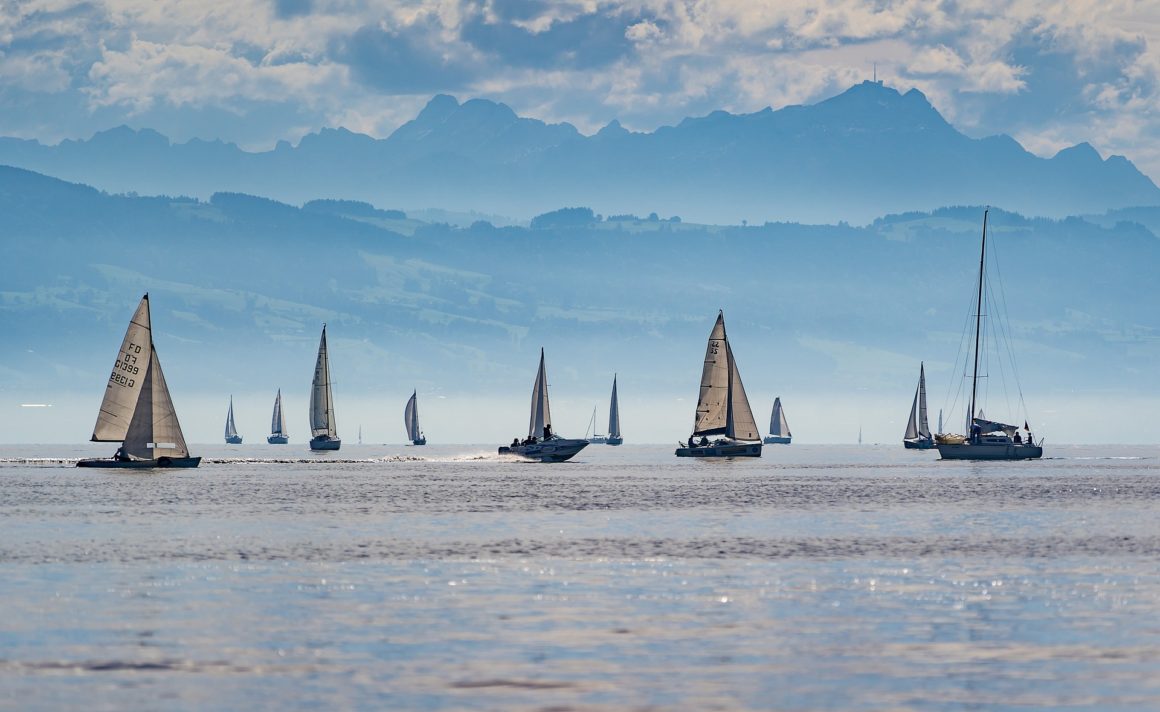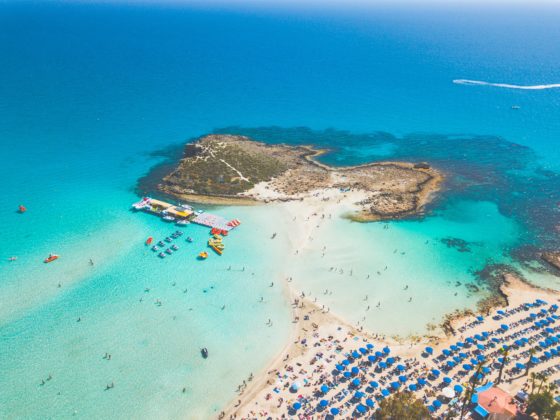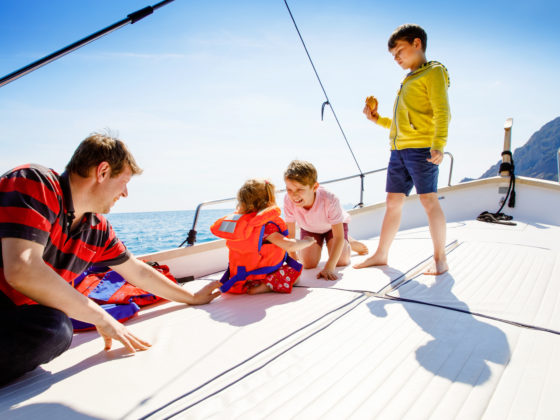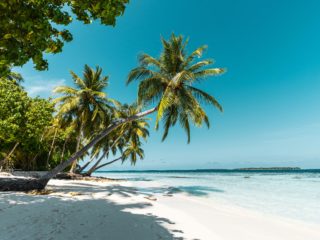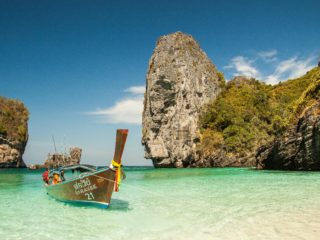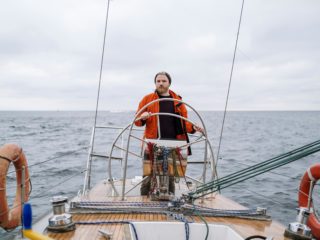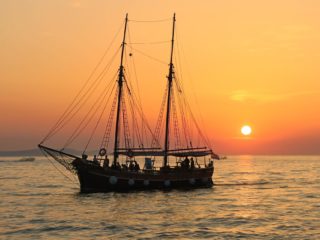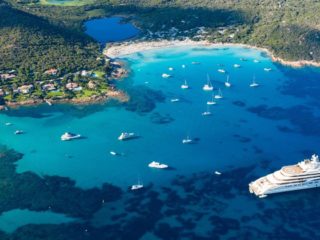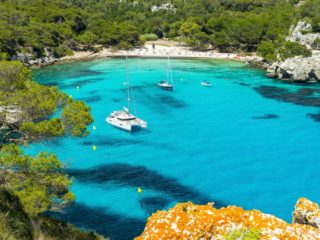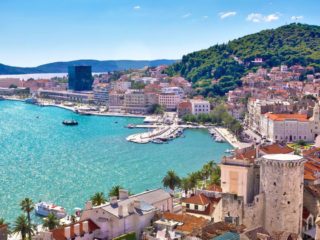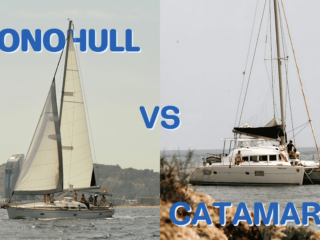Share the post "Sailing Winds in the Mediterranean and Aegean Seas"
Picture yourself setting sail through the dazzling Mediterranean and Aegean regions, with the sun beaming down and the gentle lull of the waves beneath you. As you venture further out to sea, intense winds begin to build. Europe experiences many sailing winds, such as the Mistral in France, the Sirocco in the Mediterranean, and the Meltemi in the Aegean. For those daring enough to take on the challenge, these winds offer an unforgettable sailing experience! They have shaped their region’s climate, landscape, and culture and impacted the sailing experiences of those who navigate its waters.

Mistral Winds
The Mistral is a cold, northwesterly wind that blows through France’s Rhône valley towards the Gulf of Lion. It’s most common in winter and spring and can reach 100 km/h. The Mistral is believed to affect people’s moods. In Provence, locals believe it can drive one crazy, earning it the moniker “wind of madness.”
The wind wreaks havoc in southern France, making maritime travel dangerous with sudden storms and frigid temperatures. It primarily affects coastal regions like Languedoc, Provence, and the Rhône Delta but can reach as far south as Sardinia, causing storms in the Mediterranean. It also increases the risk of wildfires that can spread quickly and devastate vast landscapes.
However, the Mistral provides many benefits. It blows away dust, pollution, and impurities in the air. After the wind dies, the sky clears, the sun comes out, and the air feels fresh and crisp. The Mistral plays a crucial role in the climate of Provence, one of Europe’s most important wine regions. It dries out crops, preventing the growth of mould and mildew. The Côte d’Azur also experiences 300 days of sunshine yearly, thanks to the wind.
For sailors and boaters, the Mistral is a double-edged sword. It can provide a welcome reprieve from the summer heat and create a thrilling sailing experience in weaker conditions. It’s also perfect for adrenaline junkies who love windsurfing and kitesurfing. On the other hand, the high winds can be hazardous. The Mistral can create choppy seas and waves ranging from 4 to 7 metres high. This makes navigation difficult and increases the risk of capsizing in smaller boats. The wind brings both benefits and challenges, but there is no denying its powerful impact on the region’s climate, environment, and culture.

Sirocco Winds
The Sirocco is a hot, south-Easterly wind that originates in the Sahara desert and is a formidable force in the Mediterranean. With speeds reaching up to 100 km/h and lasting for days, if not weeks, this wind should not be taken lightly. It carries sand and dust that reduce visibility and cause damage to buildings, vehicles, and crops.
The Sirocco usually occurs in the spring and fall months. Drawing hot, dry air from the Sahara towards the Mediterranean, the wind acquires moisture, resulting in increased humidity and temperature. It creates dusty, dry conditions along the North African coast, storms in the Mediterranean Sea, and warm, wet weather in Southern Europe. It can even cause “blood rain,” where the sand mixes with the moisture. The wind’s arrival was historically seen as a sign of impending drought and famine.
For sailors, the wind can create unpredictable conditions and reduce visibility, making navigation extremely challenging. The combination of high temperatures and humidity can be unbearable. Additionally, the wind’s intensity makes it difficult to maintain control of a vessel. The Sirocco also causes damage to boats and equipment. The sand and dust can scratch and abrade surfaces, while the high winds can cause rigging and sails to tear.
Sailors who find themselves in Sirocco’s path should take precautions to stay safe. This includes adjusting your course, securing loose items on deck, and wearing protective clothing to minimise exposure. Nevertheless, Mediterranean sailors have adapted and developed strategies for navigating its wind and waves. Despite its challenges, the Sirocco has shaped the culture and traditions of the Mediterranean region. It’s referenced in literature, art, and music and has influenced everything from architecture to fashion.

Meltemi Sailing Winds
The Meltemi winds provide an exhilarating challenge for sailors in the Aegean Sea. Originating in the Balkans and Turkey, this dry and powerful wind blasts towards the Greek islands. It reaches speeds of up to 80 km/h, often lasting several days. The Meltemi significantly impacts the region’s weather patterns, vegetation, and wildlife. Its intensity and dryness can lead to droughts and wildfires. However, the Meltemi provides much-needed relief from the scorching summer heat and humidity.
The Meltemi are excellent sailing winds for navigating the Aegean waters. Causing fast and exhilarating voyages, the Meltemi is a sailing enthusiast’s dream come true. However, it is unpredictable and can create challenging conditions for inexperienced sailors. Navigation can be difficult with sudden gusts of wind and choppy seas.
The Meltemi has played a crucial role in the Aegean’s history, culture, and traditions. Ancient seafarers and traders relied on the wind, shaping the region’s maritime history. The wind has been revered and feared by sailors for centuries, inspiring much of the region’s folklore. Its unpredictable and swift nature inspired tales of heroes and mythical creatures. Even famous figures such as Odysseus and Menelaus faced the Meltemi while returning home after the Trojan War.
Despite its erratic nature, the Meltemi wind has left its mark on the region’s culture and history. So if you visit the Aegean Sea, appreciate its breathtaking power. Maybe it’ll inspire you to embark on a thrilling sailing adventure across the sea!

Set sail on your Mediterranean adventure!
As you venture out to sea, it’s essential to understand the unique characteristics of each wind and plan accordingly. With the proper preparation and expertise, you can harness the power of these winds to create unforgettable memories that will last a lifetime. Just remember, safety should always come first. Find your current wind conditions here! These sailing winds are exhilarating but dangerous, so stay alert. Whether you’re a novice or a seasoned sailor, there’s no denying the fascinating and complex nature of the Mistral, Sirocco, and Meltemi winds. These winds continue to capture the imagination of sailors, boaters, and travellers. They are an essential part of Mediterranean or Aegean sailing adventures.

